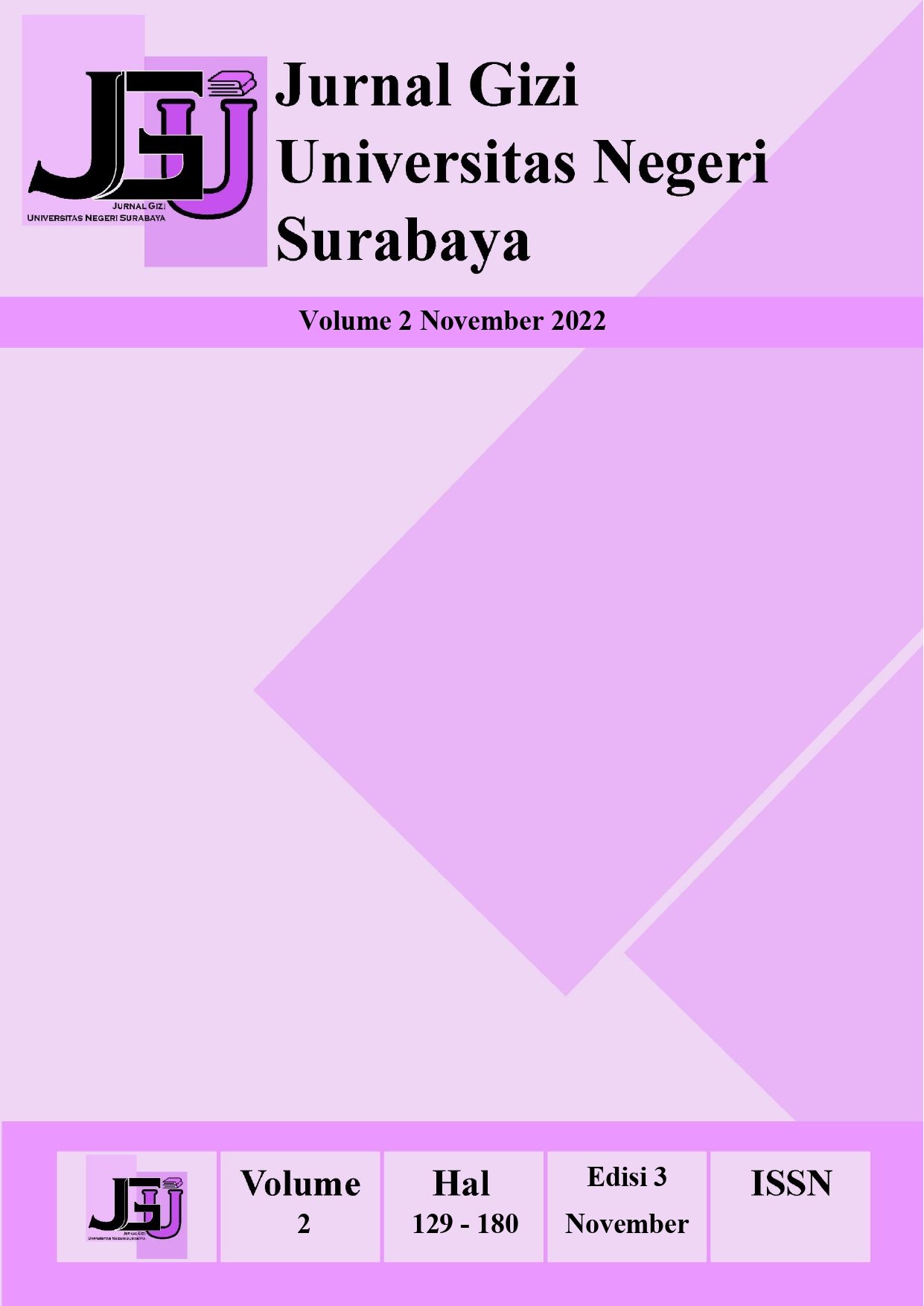The Acceptability and Nurtrient Content of Kue Ku With The Utilization of Centella Leaf Essence (Centella asiatica L. Urban) as Natural Content for Healthy Snacks During The SARS COVID-19 Pandemic
Keywords:
Centella asiatica Leaves, Kue Ku, Snack, Pandemic, COVID-19Abstract
The SARS COVID-19 pandemic is an infectious disease that has spread in various parts of the world caused by SARS-CoV-2. As an effort to minimize inflammatory effects by optimizing the immune system in the body, adequate intake is needed. Kue ku with the use of centella asiatica leaf essence can be a healthy snack rich in macronutrients and micronutrients. This study aims to analyze the addition of centella asiatica leaf essence as a natural dye to the acceptability and nutritional value. The research method is pure experimental using a Complete Randomized Design (CRD) design with 3 treatments in the form of adding centella asiatica leaf essence to kue ku with a percentage of 15%, 30% and 45%. The panelists in this study were 5 trained panelists as well as 30 semi-trained panelists. The data collection technique in this study used a sensory test based on the level of favorability, then the analysis technique used descriptive analysis and statistical analysis of the Kruskal-Wallis non-parametric test with the Mann Whitney advanced test at a 95% confidence level (p<0.05). The results showed that there was an influence of formulation on color characteristics (p=0.017). For aroma, texture, taste and overall parameters indicate the insignificant differences (p>0.05). The most preferred sample treatment was the P3 kue ku sample (addition of 45% centella asiatica leaf extract). The nutritional content of the best product of the P3 kue ku sample in the form of energy, protein, fat, carbohydrates, vitamin C and iron is 185 g, 5.7 g, 5.2 g, 28.7 g, 14.6 mg and 5.3 mgDownloads
Download data is not yet available.
Downloads
Published
2022-11-30
How to Cite
Hakim, L. (2022) “The Acceptability and Nurtrient Content of Kue Ku With The Utilization of Centella Leaf Essence (Centella asiatica L. Urban) as Natural Content for Healthy Snacks During The SARS COVID-19 Pandemic”, Jurnal Gizi dan Kesehatan Nusantara, 2(3), pp. 129–138. Available at: https://ejournal.unesa.ac.id/index.php/GIZIUNESA/article/view/50020 (Accessed: 18 December 2025).
Issue
Section
Artikel
 Abstract views: 374
,
Abstract views: 374
, PDF Downloads: 793
PDF Downloads: 793


